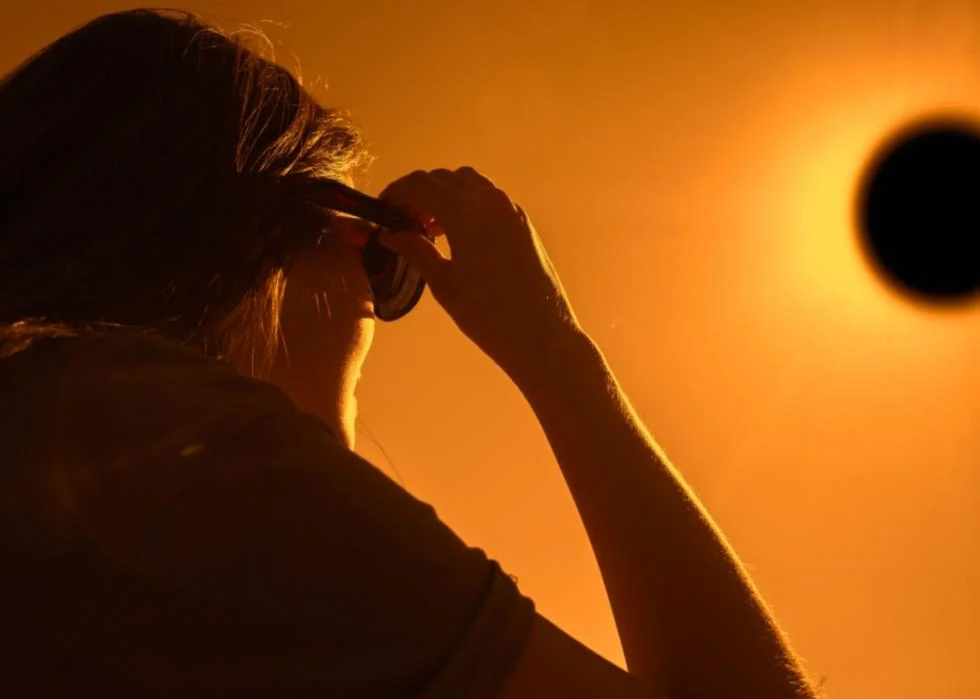As much as it might seem that way as you reach the end of your last roll of toilet paper, staring down the barrel of having to make a trip to the supermarket and dodge its roving horde of potential disease vectors, COVID-19 is not the end of the world.
But the coronavirus outbreak does have us thinking: What if the world was ending? If there was a clear and present disaster that was going to bring society as we know it to an end, what would we do?
Three immediate responses leap immediately to mind: a) we abandon everything and disappear into the wilderness, where things will be rougher, but at least there won’t be any people to deal with; b) we stay where we are, doing our best to survive in the same place where we previously lived; or c) we fork over however much cash we need to get into somebody else’s survival bunker – after all, we certainly haven’t built our own.
To see how viable each of these options are, we spoke to the experts.
Head for the hillsIf and when disaster strikes, can we just pack a bunch of stuff into a backpack, hightail it to the nearest wilderness area, and vanish into the backcountry? For many around the Four Corners, it’s a compelling fantasy, doomsday or otherwise.
According to Jessie Krebs, the head instructor at SERE Training School (which has dedicated survival training locations near Denver, Boulder, and Durango), the short answer is “maybe.” Humans have done it for the majority of our existence, she noted.
[image:2]Krebs, a former U.S. Air Force SERE (survival, evasion, resistance, and escape) Training Instructor, has trained hundreds of people on how to survive in hostile environments around the world. The classes she currently teaches focus primarily on the skills you’d need to survive if something went wrong on your backpacking trip and you have to survive in the middle of nowhere until you get rescued. But there’s some overlap between those skills and the ones you’d need if you wanted to adopt a nomadic lifestyle. But you’d probably need to learn those skills in advance, nonetheless.
Knot tying, for instance, is a particularly useful skill that people just don’t know anymore, she said.
“We get tension straps and we create buckles and systems and things to use, but if you know how to use knots, you can do everything from lower yourself out of a burning or earthquake-damaged building or off of a pour-over or something in a canyon somewhere, so it can be outdoor or more inner-city,” she said. “You can make a litter, you can tie up a splint if you’re injured, you can build a shelter, you can build a raft; there’s so much I can do with just a simple knot.”
And that’s just one of the hundreds of skills you can learn right now that may come in handy later on.
“I think it’s good not only for survival, whether its doomsday or just day-to-day kind of things, to have a sense of self-competency. You never know when you may have a skill that somebody else doesn’t have and you can step in and really save the day or help someone out significantly just by having a skill other people don’t normally have.”
If you have to suddenly put together a kit of things you’re going to take with you into the woods, you should keep five basic needs in mind, Krebs said, as well as how long you think you’ll be away from civilization. You’ll need:
• Something to signal with, especially in a survival scenario where you’re going to require rescue or someone else’s help. This can be electronic, pyrotechnic or a ground-to-air device such as a signal mirror.
• Personal protection in the form of something to regulate your body temperature, a form of shelter, and something to make fire. The temperature and weather are going to vary, and your normal clothes probably aren’t going to cut it.
• Sustenance – ways to obtain water and food. On the hydration side, this might mean canteens and a water purifier or iodine tablets; for food, perhaps snare wire and a fishing kit.
• Ways to maintain your health. This will include a first aid kit as well as any guides on how to not just keep yourself physically healthy (including whatever medications you need to live), but also maintain a sense of mental and emotional stability. You may need to keep yourself calm, especially when you’re trying to fix the bone that’s now sticking out of your leg.
• And travel items, such as a map and compass. You may have to navigate across various terrains.
Luckily, Krebs said, the easiest environment to survive in is one with mild temperatures, a lot of vegetation and animals, but few predators – basically, the majority of North America. In other words, run into the woods or plains, not the barren desert.
Home sweet homeThe school of thought that says, “in the event of a major crisis, I’m going to head for the hills and live off the land for the rest of my days,” is flawed, according to Jim Cobb, editor of “Prepper Survival Guide Magazine” and author of the “Backwoods Survival Guide.”
[image:3,mugshot]“They’re right. They will live off the land for the rest of their days,” he said. “The problem is the number of those days is probably going to be far fewer than they thought it was going to be because they don’t know what they’re doing. There are very few people, relatively speaking, who have the skills, the abilities and the mindset sufficient to run off to the woods to live off the land forever.”
What does he recommend people do instead? Stay where you are.
“It’s such a funny little catchphrase, ‘It takes a village,’ but it’s true. You can’t do it all by yourself. You need other people around,” Cobb said. “Survival is a lot easier when you have several people involved who can divide the work and tend to the gardens, and produce the food, and preserve the food, and cook the meals, and purify the water, and help with the laundry and the cleaning, and deal with first aid and all this.”
While many in the disaster preparation community like to romanticize the end of the world, stockpiling bottles of water and ammunition, Cobb suggests that some of the most useful skills are the ones that your corporate HR department will force you to attend seminars on — interpersonal communication skills and conflict resolution.
“These are things that we hear about in the business world. We don’t care about them much in the survival world, but they’re just as important. The leaders of the group need to be able to help everybody get along. If everybody’s fighting, no work gets done,” he said.
Like Krebs, Cobb says that you’ll be better off if you start learning skills and even preparing before a disaster happens. He preaches the rule of survival thermodynamics, an idea survivalist author Ragnar Benson came up with: Don’t invest energy into an activity that’s not going to benefit you with an equal or greater amount of energy afterward.
“It makes very little sense to grab a rifle and spend all day long tracking game in the woods to come back with one squirrel, because the benefit you’re going to get out of that squirrel is outweighed by all of the energy you expended all day long traipsing through the forest. Whereas, if you were to go out and set 25 traps and snares, and take an hour and a half to do it, and then go back to your house, your village, whatever, and go through your day and then come back in the evening or the next morning and collect a few animals, you’ve made a wiser choice in terms of how you’re going to expend your energy.”
If you head into the apocalypse with skills that will allow you to conserve energy, such as trapping and gardening instead of hunting and scavenging, you’ll be better off. Plus, when you develop a surplus and befriend others with skills that complement your own, you can start rebuilding a little society.
Physically preparing for disaster also doesn’t have to be as difficult as pop culture makes it look, Cobb said. You don’t need to buy pallets of survival food and a bunker in which to store them. Instead, when you go shopping just add a few extra shelf-stable foods that you already eat, such as dry pasta and jarred sauce, to your cart. But don’t leave it on your shelf forever; rotate it out and use it on a regular basis – having all this extra food isn’t going to do you much good if it’s all long-expired.
Combine that food, though, with some sort of filtration system for water, and skills to gather more resources efficiently, and you might be good to go.
Gimme shelterLearning survival skills and preparing for disaster is all well and good, but if you’ve got the funds, do you really need to do any of it yourself?
No. Let other professional preppers do it for you – at least that’s the business model behind Fortitude Ranch, a survival community with multiple locations, run by Drew Miller. For about $1,000 per person annually, you can book your spot in an existing community in the woods that’s already equipped with everything you’ll need when the world ends. (And assuming the world isn’t ending, your membership entitles you to use the lodges for recreation.)
[image:4]In addition to a site in West Virginia and more planned elsewhere, Fortitude Ranch has a community in Colorado, at a secret location somewhere around the Sangre De Cristo Mountains (we think). While COVID-19 is nowhere near as bad as a virus would have to be to necessitate heading to one of his bunkers, Miller points out that they were designed with a pandemic in mind.
“A typical survival place you think of is a deep underground shelter where everyone’s kind of sharing the same air supply and recirculating air. We’ve never done that. … We have a lot of separate buildings, and even if you’re in a place that has a lot of rooms in a building that’s underground, we have outside air vents so that you have your own air supply. We’re designed to operate under quarantine-type conditions if we need to,” he said.
The ranches have a year-round staff that maintains them and the animals on the ranches – yes, there will be horses in the end times. The staff is also trained in a number of those skills that Cobb mentioned, including growing food and raising livestock. While the staff does not necessarily include medical professionals, Miller said that there are people from the medical community on the member side of the equation.
[image:5]The key thing that makes his ranches a better idea than going it alone, Miller said, is the security they provide.
“If it’s a really bad collapse and you’re a prepper, you’ve actually just made yourself more of a target,” he said. “If you’ve got a lot of supplies and you cannot defend them, especially at night, against a well-organized marauder gang, you’re almost worse off. … It’s not easy to keep guards on duty; it takes a lot of discipline and a lot of people.”
Fortunately, if you’re a member of Fortitude Ranch, the staff is also trained to do exactly that.
Unfortunately, if you live closer to the Colorado location than the West Virginia one, you’re out of luck. The membership of the ranches is capped by how many people they can fit in during a disaster scenario, and at least for the moment, Colorado’s is at capacity, Miller said.
Back to the disaster drawing board, we guess.













